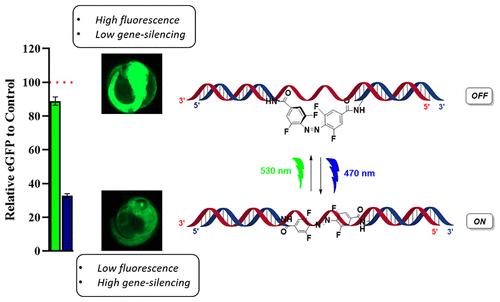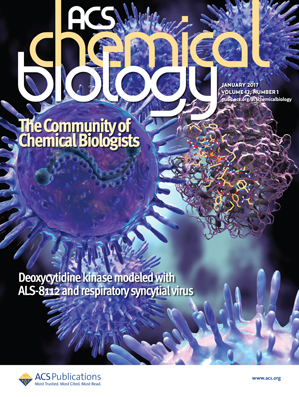向日本青鳉胚胎体内注射可逆光控短干扰 RNA 以调节基因沉默
IF 3.8
2区 生物学
Q2 BIOCHEMISTRY & MOLECULAR BIOLOGY
引用次数: 0
摘要
利用固相磷酰胺化学合成了可光开关的正交官能化四氟偶氮苯修饰 siRNA(F-azo-siRNA)。用蓝光(470 nm)和绿光(530 nm)分别可逆地光控转基因日本鳉(Oryzias latipes)中靶向增强型绿色荧光蛋白(eGFP)的 F-azo-siRNA 的活性,以激活和灭活 siRNA。这项研究是首次使用光开关 siRNA 进行可逆的体内研究。在体内可逆地控制 siRNA 的功能可为生物技术研究带来新的机遇,从而更好地了解基因功能和细胞机制。本文章由计算机程序翻译,如有差异,请以英文原文为准。

In Vivo Injection of Reversible Optically Controlled Short Interfering RNA into Japanese Medaka Embryos (Oryzias latipes) to Regulate Gene Silencing
Photoswitchable ortho-functionalized tetrafluorinated azobenzene-modified siRNAs (F-azo-siRNAs) were synthesized using solid-phase phosphoramidite chemistry. The activity of an F-azo-siRNA targeting enhanced green fluorescence protein (eGFP) in transgenic (Tg) Japanese Medaka (Oryzias latipes) was reversibly photocontrolled with blue (470 nm) and green (530 nm) light, to activate and inactivate the siRNA, respectively. This study highlights the first reversible in vivo study with photoswitchable siRNA. Controlling siRNA function reversibly in vivo could open new opportunities for biotech research to better understand gene function and cellular mechanisms.
求助全文
通过发布文献求助,成功后即可免费获取论文全文。
去求助
来源期刊

ACS Chemical Biology
生物-生化与分子生物学
CiteScore
7.50
自引率
5.00%
发文量
353
审稿时长
3.3 months
期刊介绍:
ACS Chemical Biology provides an international forum for the rapid communication of research that broadly embraces the interface between chemistry and biology.
The journal also serves as a forum to facilitate the communication between biologists and chemists that will translate into new research opportunities and discoveries. Results will be published in which molecular reasoning has been used to probe questions through in vitro investigations, cell biological methods, or organismic studies.
We welcome mechanistic studies on proteins, nucleic acids, sugars, lipids, and nonbiological polymers. The journal serves a large scientific community, exploring cellular function from both chemical and biological perspectives. It is understood that submitted work is based upon original results and has not been published previously.
 求助内容:
求助内容: 应助结果提醒方式:
应助结果提醒方式:


